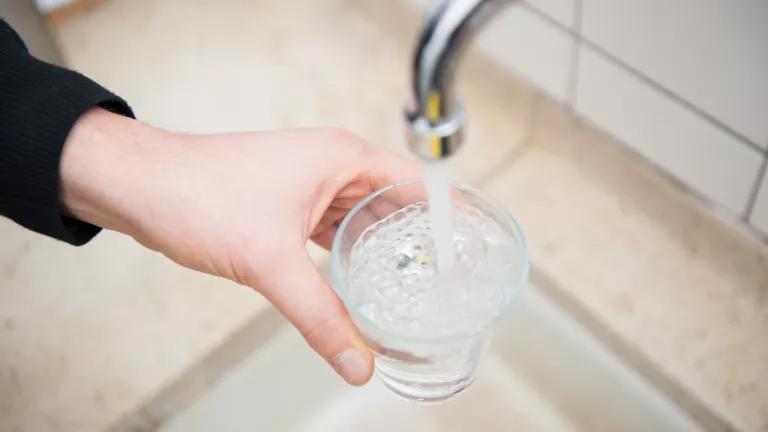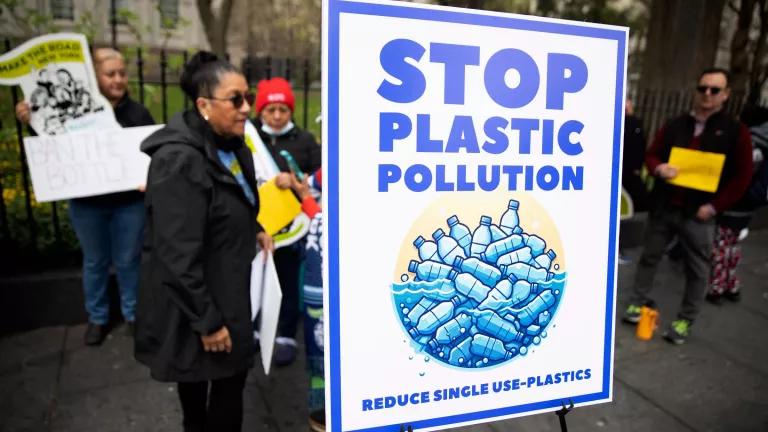One Year After Hurricane Maria: A Retrospective
More federal funds are needed to ensure that the Puerto Rico's infrastructure can be rebuilt with strength and sustainability to withstand future hurricane seasons and protect its hard-fought progress toward recovery.

The Carolinas were this week drenched with rain and buffeted by strong winds, as Florence swept over the mainland. The federal response to Florence has attracted scrutiny as missteps from Hurricane Maria are remembered, one year after the storm made landfall in Puerto Rico. The one-year anniversary of Hurricane Maria puts the island’s fragile recovery from last summer’s deadly storms in focus.
Puerto Rico is ill-prepared for another hurricane. As I wrote in The New York Times in February, Congress’ aid to Puerto Rico, while indispensable, was insufficient to provide long-term solutions to the island. Puerto Rico needs resilient water and energy systems. More federal funds are needed to ensure that the island’s infrastructure can be rebuilt with strength and sustainability to withstand future hurricane seasons. Otherwise, we will see Puerto Rico’s hard-fought progress evaporate with new storms’ punishing winds.
In March, I traveled to Puerto Rico to speak with healthcare providers about Maria’s impact on health six months after the storm; in a story for the Washington Post, I documented how doctors were seeing increases in chronic conditions like cardiac arrest and intracranial hemorrhages, and more waterborne and bacterial disease. One year after Maria, doctors say that the spike in serious health conditions has eased, but mental health and access-to-care issues linger. The possible collapse of Puerto Rico’s healthcare infrastructure—particularly private, primary care services—demands urgent attention.
The Environmental Protection Agency’s historic failure to address Puerto Rico’s near-total non-compliance with the Safe Drinking Water Act has increased the island’s water systems’ vulnerability to extreme weather. Even before Maria, 99.5 percent of Puerto Ricans were served by water systems in violation of the Safe Drinking Water Act; 70 percent were served by water systems that had unlawfully high levels of coliform bacteria, certain kinds of cancer-causing chemicals, and other regulated substances. (Read NRDC’s report for more on this.) With most of the island’s water infrastructure damaged by Maria, and a troubling lack of information about water quality on the island now, new storms would be inopportune. A sustained power outage, shutting down water systems, would simply be devastating.
The degraded state of Puerto Rico’s water and energy infrastructure prior to the hurricane likely contributed to Maria’s estimated death toll, now pegged at 2,975 by the local government. Moving forward, the allocation of previously appropriated federal funds to strategic and sustainable projects will be key to building resiliency and preserving lives.
If Puerto Rico gets slammed by a hurricane again this season, it’s critical that the federal government avoid missteps that dogged its response to hurricanes Maria and Irma. A less-than-muscular response from Congress, the Federal Emergency Management Agency and EPA has left the island with larger gains to make than necessary. And a lack of leadership from President Donald Trump’s White House, rendering the administration a rudderless ship, has made matters worse for the island’s long-suffering residents.
FEMA has been roundly criticized for its slow response to the emerging crisis in Puerto Rico after Maria; the agency also suffered from poor leadership from the White House, and a crisis that overwhelmed its mandate. (My colleague Rob Moore’s blog post explains what FEMA can do differently next time.) Low levels of investment in Puerto Rico’s infrastructure make the island uniquely defenseless against big storms. The upshot: a strong and swift response from the White House and Congress, and robust coordination between agencies is vital.
Puerto Rico has strong communities; the island simply needs a fair allocation of resources to rebuild and mitigate the effects of powerful storms. Meanwhile, the tender shoots of progress are already poking through the topsoil.


